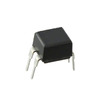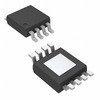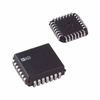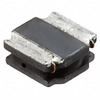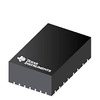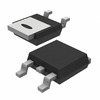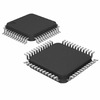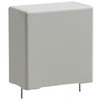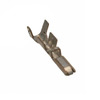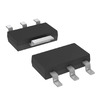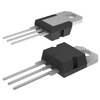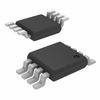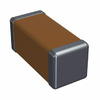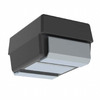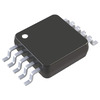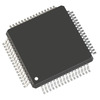TM1650 Chip: Everything You Need to Know
The TM1650 is a flexible driver chip designed to manage digital tube displays efficiently. Using a simple 2-wire communication system, it connects easily with microcontrollers and offers features like keypad scanning, LED control, and brightness adjustment. Known for its low power use and ability to resist interference, the TM1650 is suitable for many applications, including consumer electronics and home automation. This article will cover the chip's pin layout, technical details, functions, and common uses, providing a full guide to making the most of its features in digital display systems.Catalog

Introduction to TM1650
The TM1650 is a versatile driver chip created specifically for digital tube displays. It has various pin configurations and allows for easy control of digital displays. This chip connects smoothly with microcontrollers or other controllers through a simple communication method, enabling functions like MCU I/O control, keypad scanning, LED control, and brightness adjustment. Its low power consumption and ability to adjust brightness make it useful in many digital display applications.
The TM1650 uses a 2-wire serial communication system. While it's not the standard I2C, it effectively communicates with just two pins. This design saves MCU pin resources, simplifies the display circuit setup, and improves overall system performance.
Replacements and Equivalents
Several alternative chips to the TM1650 include:
• CD4511
• HT16K33
• MAX7219
• PCA9685
TM1650 Symbol, Footprint, and Pin Configuration

The TM1650 is a key part used in digital display systems. It has 16 pins, each with its own function, such as controlling LED segments, handling data and clock signals, providing ground, and delivering power. Knowing what each pin does can help you use the TM1650 more effectively.
Pin Functions and Descriptions
Each pin on the TM1650 has a specific job that helps the device work properly:
• Pin 1 (DIG1)
This pin acts as the first output for LED segments or for scanning a keypad. In practice, it is usually connected to the first segment of a multi-segment display, making sure the data is shown correctly. This connection can give a sense of satisfaction as it brings the data to life in a visual form.
• Pin 2 (SCL)
This pin is the data input line. It works together with the clock signal to make sure the data is transferred correctly between the microcontroller and the TM1650. Proper shielding and placement of this pin are very important to avoid noise interference, which can cause frustration when data errors happen.
• Pin 3 (SDA)
This pin is the clock input. The clock signal keeps everything running in sync, and the right timing is very important for the display’s reliability and refresh rate. Timing problems can create stress when the display shows glitches.
• Pin 4 (GND)
This pin provides the ground connection, giving the circuit a common reference point. Proper grounding is needed to stop signals from floating and to keep the circuit stable. If grounding is ignored, it can lead to unexpected problems.
In real-world use, making sure the power and ground connections are clean and stable has greatly improved the performance and reliability of the TM1650 in different environments. There’s a sense of achievement when these connections help the device run smoothly.
TM1650 LED Driver Features
The TM1650 LED driver is good at resisting electronic interference, making it suitable for areas with a lot of electronic noise. It has built-in features like a data lock and a power-on reset, which help keep the system stable and reliable by preventing errors and allowing smooth restarts. It comes in both DIP16 and SOP16 package types, giving flexibility in how it's used in circuits, and it's commonly found in LED drive control setups. Its keyboard scanning feature detects inputs and controls LED displays, making it useful for devices in both consumer electronics and industrial systems that need to quickly read inputs.
Technical Details of the TM1650 LED Driver
The TM1650 LED driver works well in many situations and is designed for efficiency. Its main specifications include an operating voltage range of 3V to 5V, allowing it to work with different power levels. It comes in two types, DIP16 and SOP16, to fit different installation needs. The keyboard scanning function can handle a 7x4-bit scan, allowing up to 4 key combinations, which is good for more complex input devices. It can drive an 8-segment by 4-bit common cathode display, ensuring a bright and steady output. The communication interface uses a method similar to the I2C protocol but without a specific address for each device, making data transfer easier. The I2C-like protocol allows for dependable communication even with smaller amounts of data, giving the option to use both hardware and software to meet speed and flexibility needs depending on the system.
How the TM1650 LED Driver Works
The TM1650 LED driver is very good at controlling 4-bit, 6-bit, and 8-bit common anode digital displays using serial communication. By using clock and data signals, it can stagger the way it writes addresses and data, allowing precise control of each part of the display. Its serial communication reduces the need for complicated wiring, making it great for projects with a lot of LEDs and improving overall control. The driver can handle different bit lengths, from 4-bit to 8-bit, making it useful for a range of display applications, from small digital meters to larger panels. It can send data in stages, so specific segments can be updated one at a time, allowing for customizable and dynamic displays. By assigning specific addresses to each section, the system can make selective updates, improving performance. These features, combined with its strong serial communication, make the TM1650 a dependable and adaptable choice for many LED display systems.
Applications and Typical Circuit of TM1650
Applications of TM1650
The TM1650 is used in many different areas because of its flexibility and dependability. Common uses include:
• Home Entertainment Systems
In the world of consumer electronics, the TM1650 plays an important role in set-top boxes. It offers reliable control over display elements, improving the viewing experience for users.
• Interface Controls
It is an essential part of keyboard controls, greatly improving how users interact with their devices. It makes typing and navigating smoother, with faster response times and more stable performance.
• LED Lighting Solutions
For LED lighting systems, the TM1650 provides strong solutions for managing lighting arrays. It ensures steady brightness and reduces flickering by controlling the current precisely, creating a comfortable and visually pleasing lighting environment.
• Domestic Devices
Household appliances like washing machines and microwave ovens use the TM1650 to make controlling various features easier for users. This makes daily tasks more efficient and less difficult.
• Home Automation Systems
In the growing field of smart homes, this component helps devices work together automatically, making daily operations smoother and more energy-efficient, meeting the needs of modern households.
• Measuring Instruments
In devices like thermometers and clocks, the TM1650 is used to show accurate readings for time and temperature. This adds to the dependability of these everyday tools.
Typical Application Circuit of TM1650
The diagram below shows how the TM1650 is wired to control a common cathode digital display.

Note:
• When designing the layout, it’s a good idea to make the power and ground lines as wide as possible.
• The filter capacitor should be placed near the TM1650 pins to improve its filtering ability.
• Since the forward voltage drop of the blue digital display is around 3.0V, a 5.0V power supply should be used for the TM1650.
Advantages of the TM1650 LED Driver
The TM1650 LED driver is well-known for working efficiently and having several useful features. Its low power use, achieved through internal PWM (Pulse Width Modulation) control, allows for adjustable brightness, making energy use better and saving power. This also helps extend battery life, which is great for portable and battery-powered devices that need to work for a long time. Also, the TM1650 makes circuit design simpler by reducing the number of MCU pins needed, making the hardware setup less complex, and offering easy control through its serial communication interface. Its use in modern devices, like wearable technology, shows how energy-efficient parts can improve both the user experience and how well devices perform. In short, the TM1650’s benefits in saving power, allowing brightness control, and simplifying design make it a flexible and useful choice for electronic systems.
How to Use the TM1650 Chip
To use the TM1650 chip correctly, follow these steps:
Setting Up Power and Interface Connections
Start by connecting the power supply to the VCC and GND pins to make sure everything works properly. Then, connect the SCL (Serial Clock Line) and SDA (Serial Data Line) pins to the matching pins on your main device to allow data to be shared.
Setting Up I2C Address and Commands
If you are using more than one TM1650 chip, give each one its own I2C address to avoid problems, adjusting pins if needed. Send preset I2C commands to control display actions, like turning LED segments on or off.
Controlling the Display and Brightness
Use the TM1650 to control 7-segment or matrix LED displays by sending I2C commands to light up certain segments. Adjust the brightness of the LED using the chip’s registers to improve visibility and save power.
Using Optional Key Inputs
If you need key inputs, the TM1650 can detect and process them, improving how users can interact with your system.
Using Software Control
Write software that communicates with the TM1650 using the I2C system, making sure commands are sent smoothly and the LED displays are controlled in real time.
Differences Between TM1650, TM1651, and TM1652
TM1650
The TM1650 is made for controlling 4-bit digital LED displays, making it easier to connect with microcontrollers using the I2C bus. This reduces wiring and ensures steady control, which makes it a good option for basic display needs. Its small size is also helpful in tight spaces.
TM1651
The TM1651 expands on the TM1650 by supporting 8-bit common anode displays and adding the ability to scan for key inputs. This allows better control of both displays and user inputs, making system design easier by cutting down on the number of extra parts needed. The key scanning feature improves user interfaces by making inputs more accurate and responsive.
TM1652
The TM1652 builds on the features of the TM1651, offering higher performance for more advanced display needs. It provides clearer visual output and keeps the display sharp under different conditions, making it suitable for tasks that need higher display quality, like those involving complex data or detailed displays.
Frequently Asked Questions [FAQ]
1. Why use the TM1650?
The TM1650 helps control multiple LEDs in a better way, especially for numbers and letters, reducing the number of parts needed and making the design process easier for engineers.
2. What exactly is the TM1650?
The TM1650 is a special chip designed to manage LED displays and includes a function for scanning keyboards. Its design makes it better at handling both display and input tasks.
3. Where is the TM1650 typically used?
You can find the TM1650 in digital devices that need to show numbers clearly. It’s commonly used in things like digital clocks, temperature displays, and other gadgets that display numbers.
4. What types of displays does the TM1650 control?
The TM1650 mostly manages seven-segment LED displays, but it can also handle dot matrix displays and other types of LED layouts.
About us
ALLELCO LIMITED
Read more
Quick inquiry
Please send an inquiry, we will respond immediately.
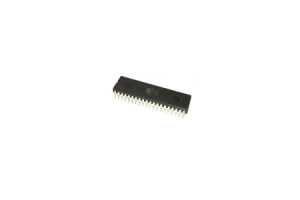
AT89C51 Microcontroller: Features, Functions and Applications
on September 26th

STM32F030F4P6 Microcontroller: Features, Benefits, and Applications
on September 25th
Popular Posts
-

What is GND in the circuit?
on January 1th 3272
-

RJ-45 Connector Guide: RJ-45 Connector Color Codes, Wiring Schemes, R-J45 Applications, RJ-45 Datasheets
on January 1th 2815
-

Understanding Power Supply Voltages in Electronics VCC, VDD, VEE, VSS, and GND
on November 20th 2640
-

Fiber Connector Types: SC Vs LC And LC Vs MTP
on January 1th 2265
-

Comparison Between DB9 and RS232
on January 1th 1882
-

What Is An LR44 Battery?
Electricity, that ubiquitous force, quietly permeates every aspect of our daily lives, from trivial gadgets to life-threatening medical equipment, it plays a silent role. However, truly grasping this energy, especially how to store and efficiently output it, is no easy task. It is against this background that this article will focus on a type of coin cell battery that may seem insignificant on the...on January 1th 1846
-

Understanding the Fundamentals:Inductance Resistance, andCapacitance
In the intricate dance of electrical engineering, a trio of fundamental elements takes center stage: inductance, resistance, and capacitance. Each bears unique traits that dictate the dynamic rhythms of electronic circuits. Here, we embark on a journey to decipher the complexities of these components, to uncover their distinct roles and practical uses within the vast electrical orchestra. Inductan...on January 1th 1807
-

What Is RF and Why Do We Use It?
Radio Frequency (RF) technology is a key part of modern wireless communication, enabling data transmission over long distances without physical connections. This article delves into the basics of RF, explaining how electromagnetic radiation (EMR) makes RF communication possible. We will explore the principles of EMR, the creation and control of RF signals, and their wide-ranging uses. The article ...on January 1th 1801
-

CR2430 Battery Comprehensive Guide: Specifications, Applications and Comparison to CR2032 Batteries
What is CR2430 battery ?Benefits of CR2430 BatteriesNormCR2430 Battery ApplicationsCR2430 EquivalentCR2430 VS CR2032Battery CR2430 SizeWhat to look for when buying the CR2430 and equivalentsData Sheet PDFFrequently Asked Questions Batteries are the heart of small electronic devices. Among the many types available, coin cells play a crucial role, commonly found in calculators, remote controls, and ...on January 1th 1799
-

Comprehensive guide to hFE in transistors
Transistors are crucial components in modern electronic devices, enabling signal amplification and control. This article delves into the knowledge surrounding hFE, including how to select a transistor's hFE value, how to find hFE, and the gain of different types of transistors. Through our exploration of hFE, we gain a deeper understanding of how transistors work and their role in electronic circu...on November 20th 1782



